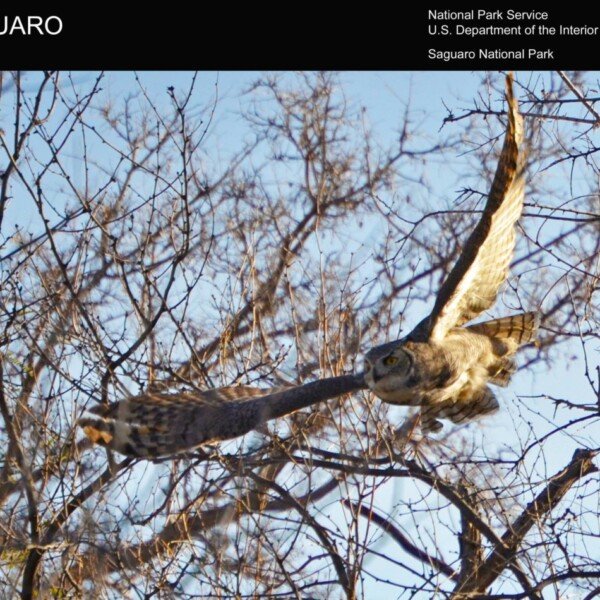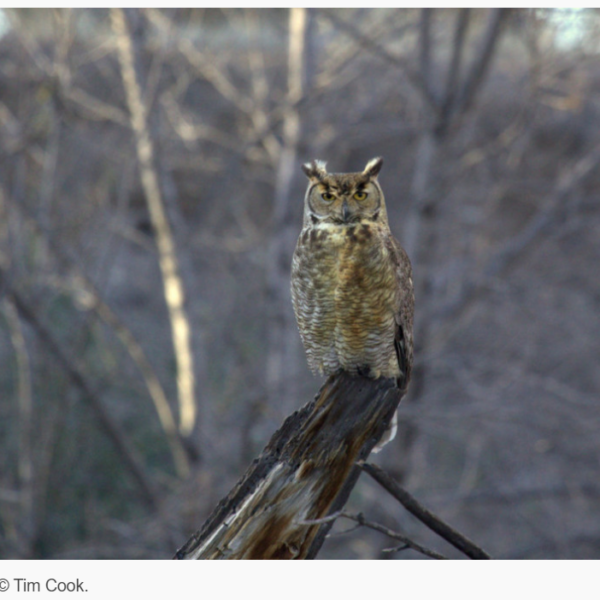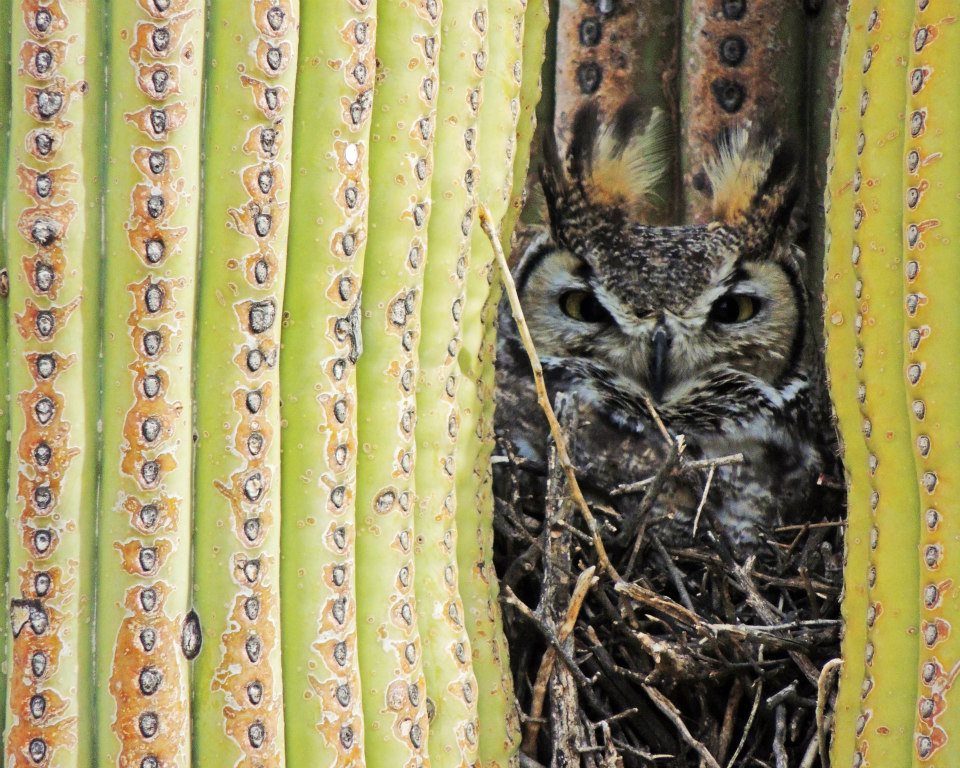Their name comes from the horn-like feather tufts on the tops of their heads. The tufts are darker than the rest of the head, which improves their camouflage. As masters of disguise, their overall color is dependent on their location. So here in the desert, great horned owls are a lighter gray coloration while those in woodlands may have a darker, browner coloration.
Great horned owls (Bubo virginianus) live in a large geographic range that covers most of North America, Central America and even South America. They are not a very social species, but they are loyal. These monogamous birds raise their young in pairs and can be quite defensive parents. A mating pair will often exclude other breeding pairs from their territory to ensure access to prey. Who doesn’t want the best for their kids right?
Breeding occurs between November and April. Male great horned owls hoot throughout the year, but females only hoot during mating season. So next time you hear one of those majestic hoots at night, depending on the time of the year, you might be able to tell if it’s a male or female great horned owl.
The great horned owl is listed as Least Concern according to the IUCN Red List.
Other interesting facts:
- These intelligent birds certainly don’t like to reinvent the wheel, so they’ll often inhabit nests abandoned by squirrels or other birds, including other great horned owls.
- They do not migrate, they like to stay in the same general area. In fact, they love their area so much that they will even fight each other to the death defending their territory.
- Great horned owls on average can live up to 13 years in the wild and 20 years in captivity. However, human activities such as habitat degradation can drastically shorten their lives.
- In southwestern U.S. great horned owls are smaller, and often feed on juvenile rabbits, small rodents and insects.
Sources:



